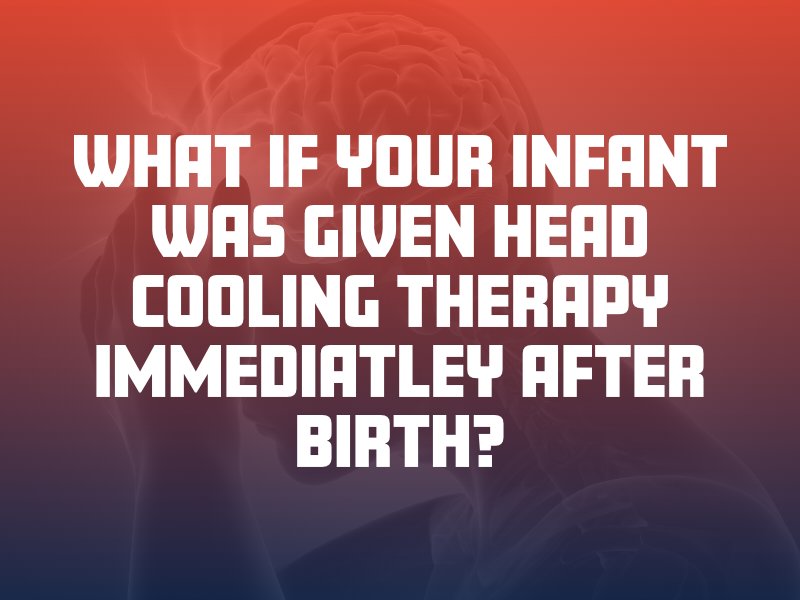Head cooling therapy is a treatment that is often prescribed for hypoxic-ischemic encephalopathy (HIE), which is a type of birth injury. HIE is a neonatal brain injury that occurs if the infant’s brain does not receive enough oxygen during labor or delivery. Head cooling can slow down the brain’s metabolism and help prevent further damage. If your infant requires head cooling after birth, this could be a sign of medical malpractice that resulted in a loss of oxygen to your baby’s brain.
What Is Head Cooling Therapy?
Head cooling therapy, also known as whole body cooling, neonatal body cooling and newborn therapeutic hypothermia, is used to lower a baby’s body temperature to treat hypoxic-ischemic encephalopathy. When an infant’s still-developing brain fails to receive a steady flow of oxygen, it can cause permanent brain damage and impairment. A loss of oxygen (hypoxia) for even a short period of time can damage the brain’s cells. Even with prompt treatment, HIE can have severe long-term consequences. This includes cerebral palsy, which is a permanent neurological disorder that can affect movement and muscle tone.
If a baby is diagnosed with HIE after suffering brain hypoxia or birth asphyxia, the treatment used to minimize permanent brain damage (and, in some cases, prevent it altogether) is cooling therapy. Cooling therapy reduces the newborn’s body temperature to help the brain recover from injury. This therapy was developed as a result of observations made by physicians that patients with low body temperatures suffered fewer long-term adverse effects from certain injuries. The theory is that cooling slows down biological processes, therefore reducing the progression of brain damage.
If your baby undergoes therapy with a cooling cap that administers cooling to the brain area, it means he or she may have sustained a brain injury during the birthing process. In general, head cooling therapy is recommended if a birth injury or complication deprived the baby of oxygen, the baby needed prolonged resuscitation after birth, or the baby displayed clinical signs of brain damage or seizure activity. In some cases, doctors may administer cool therapy just as a precaution. In others, the infant has already been diagnosed with HIE.
Head Cooling Therapy and Medical Malpractice
The failure to identify hypoxic-ischemic encephalopathy promptly and treat it immediately with head cooling therapy may constitute medical malpractice. There is only a small window of time in which treating HIE is possible with cooling therapy. A delayed diagnosis, misdiagnosis or the failure to diagnose HIE could constitute malpractice, especially as the consequences of this condition are severe if left untreated.

In addition, the circumstances that led to the baby being deprived of oxygen in the first place may involve medical malpractice. If your infant is prescribed head cooling therapy for an ischemic brain injury, you should question the possibility of medical malpractice causing the brain injury. An experienced birth injury lawyer will be able to review your case, investigate the circumstances and let your family know if it has grounds to file a civil claim in New Mexico.
A medical malpractice claim aims to prove that your doctor or OB-GYN committed an act or omission that a reasonably prudent doctor would not have in similar circumstances, and that this caused your infant’s injury. The grounds of your claim may involve the cause of your child’s HIE or a delayed diagnosis that led to further damage being done to the brain by not implementing head cooling therapy immediately. Either way, a personal injury attorney at The Fine Law Firm can help you collect evidence to prove your medical malpractice claim and achieve optimal results.




